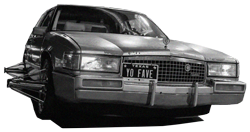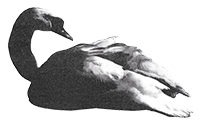The worst job I ever had was reading scripts for a movie production studio in West Hollywood. I was in college and doing it because I didn't know what to do with my life, and so convinced myself that, having seen movies before, this really shouldn't be a tough gig. And it wasn't. The hardest part, for those of you who've ever spent time in LA, was the commute: 2.5 hours there, 2.5 hours home. I took the Metrolink to the Subway (LA does in fact have one), and then still needed to walk a mile and a half.
I'd then sit down for the next eight hours and read whatever scripts, books, Reddit stories, normal short stories, and anything that could plausibly be turned into a feature film. It was a complete waste of time -- no one is spending $200M on a movie because the intern said so -- but it did give me some curious insights about the stories that people were repeatedly drawn to telling. Reading that sheer volume of material will eventually cause you to notice some patterns. And the archetype that came up time and time again was stories I'd eventually group under the umbrella of Groundhog Day-ripoffs.
There was something slightly unnerving about the sheer preponderance of these rip-offs. I don't know if it was the 5-hour daily commute, the monotony of reading variations on a theme over and over again, the strict routine I followed to accommodate this job into the rest of my life as a student-athlete, but I sensed that there was some deeper hidden truth lurking underneath these stories of people condemned to live the same day over and over again.
It wasn't until I found an intellectual ally in an early 20th Century Soviet Literary theorist that I could finally put words to this unarticulated uneasiness. In Viktor Shklovsky I found a new way to think about routine, to think about art, and to think about how we ultimately arrive at a new way of seeing things.
Shklovsky is most famous for his 1917 essay "Art as Technique" where he lays out the following argument: there is a difference between "practical" and "poetic" language; practical language tries to say things as efficiently as possible, poetic language seeks to make the strongest possible impression.
This is because we are mortal beings and, in our day-to-day lives, there is only so much we can pay attention to. The more time we spend with something, the less we notice it. Our perception becomes habitual, it becomes unconscious and automatic.
This is an intuition we have all felt. Here's a thought experiment. Imagine you get a new job in a new part of the city you live in. On your first-ever commute to the office you notice an especially beautiful tree. The impression is vivid: you notice the pattern of its leaves, the color of its bark, the way its branches sway in the wind. You decide that driving past this tree will become a permanent part of your commute moving forward.
Now flash forward a year. You've seen this tree hundreds of times now, do you even still notice it? If you do, does it retain any of the same vividness as the first time you saw it? No. You've become accustomed to the tree, your routine has rubbed away its novelty.
David Eagleman presents a strong scientific explanation for this situation: the first time we experience an image, our perception is richly vivid and time seems to slow down. However, "with repeated presentations of a stimulus," writes Eagleman, "a sharpened representation or a more efficient encoding is achieved in the neural network coding for the object." Once our brain has learned to recognize the image, it no longer requires the "high metabolic cost" of intense sensory engagement.
In some ways, this connotes mastery, the fact that we can optimize our attention span to new opportunities. If we had to re-learn how to make coffee or how to drive everyday, we probably wouldn't ever have the chance to learn something new. But a disappointment persists: we know that eventually the experience of the tree will become thin and ghostly. We feel the erasure of the vividness. The dramatization of living the same day over and over again is this same disappointment spread more widely across one's life. Routine makes us feel like we're living on autopilot. We've lessened the quality of attention we bring to the world around us.
The solution to this existential conundrum, according to Shklovsky, is art. "Poetic language." Language designed to "defamiliarize" us. And the way it goes about its defamiliarizing mission is by inviting difficulty, by describing things in unfamiliar ways, by showing an object in an oblique way, by uncovering something extraordinary about an ordinary experience.
We take it for granted how weird art can be. By that I mean, we take it for granted that there are quicker, more straightforward ways to say something like "I love you" than writing a sonnet about it. It's hard to write a sonnet; it's hard to write any poem well because we deliberately create constraints on our manner of speaking. We organize sound in regular and specific ways. We do things like rhyme and create assonance and verbal stresses. We use metaphors and keep track of meter and syllables.
These poetic techniques are a form of discovery. They cause us to hold an idea in suspension while we look for a way of saying that will echo specific sounds. For the reader, the resultant echo will leave a trace of an unexpected connection. While for the writer it will be the creation of new phrases and perspectives borne out of a discipline. The constraints prevents us from falling back into our habitual mode of understanding things. They force us to learn something new about an object we assumed we understood. This should go some way towards explaining the cross-cultural wealth of strange poetic devices.
Old-Icelandic Verse, for example, has a particular kind of metaphor called a kenning, which is a compound expression that acts as a synonym for the word it describes. Japanese Haiku, in its traditional form, is three tightly packed lines with a syllable pattern of 5-7-5 accompanied by a "cutting" word at the end of one of the lines, and a season word which indicates the time in which the poem was written. And in traditional Welsh poetry, Cynghanedd (kung-han-eth), the last stressed syllable of the first word in the line must rhyme with the last stressed syllable of the second word in the line.(If you can track it down, read Y Llamhidydd, a 100-page poem describing a dolphin).
This tightly-disciplined poetry invites us again to see things through the lens of another, but also remind us that we are always seeing through the other. We never see things as isolated, so we never know in advance what elements and connections will be helpful in expanding our perception. We never know what we might need in understanding any one element in our environment. Per Shklovsky, pile on the pressure and it forces you to see something as if for the first time again. Far from being merely decorative, like sprinkles on top of a cake, art exists to roughen up our lives, to force us to unlearn what we take for granted in the pursuit of a new way of seeing.
Art is the method to learn what it's like to be forced to reacquaint ourselves with our lives.
From existential to practical: this is often the shift you must navigate when you feel like you're onto something.
If I could offer the slightest of provocations, then, it would be this: so much of what we design for is optimized for efficiency and ease. That's good. No one wants to buy things that are impossibly difficult to learn how to use.
But I want to play the other side for a moment. We are in a crisis of over-consumption (unconscious action has long been linked to consumerism. Which is another way of saying there's a reason Dawn of the Dead takes place in a mall). The same principles which make something easy to use make it easy to become accustomed to, to make us forget we are even using it (think of the automaticity of our phone usage). We forget why we ever liked it or picked it up; we replace it with something new and shiny as soon as it's offered.
What would it look like to try to produce objects and experiences of permanent novelty instead? Things that take the principles of art -- the purposeful 'defamiliarization', the invitation of generative difficulty -- and create objects we never truly become accustomed to. Poetic design would mean something other than an especially elegant interface. It would mean designing something that never stops challenging us in ways that aren't just arbitrary.
I'd like to think that art is some sort of panacea to the consumerism that's currently burying us alive -- however that's much too grand of a proclamation. But if we can pinpoint the existential malaise that gives rise to the feeling of needing the kind of superficial novelty that the next shiny thing promises, then we can at least sketch out a vocabulary for a way forward. Returning to our lives with new eyes, restoring some of the vividness we've lost to time: these aren't dramatic awakenings like Hank Williams seeing the light. They are gentle reminders that there's more to our lives and to our selves than we've become accustomed to seeing. One word for that is attention; the other is art.



















